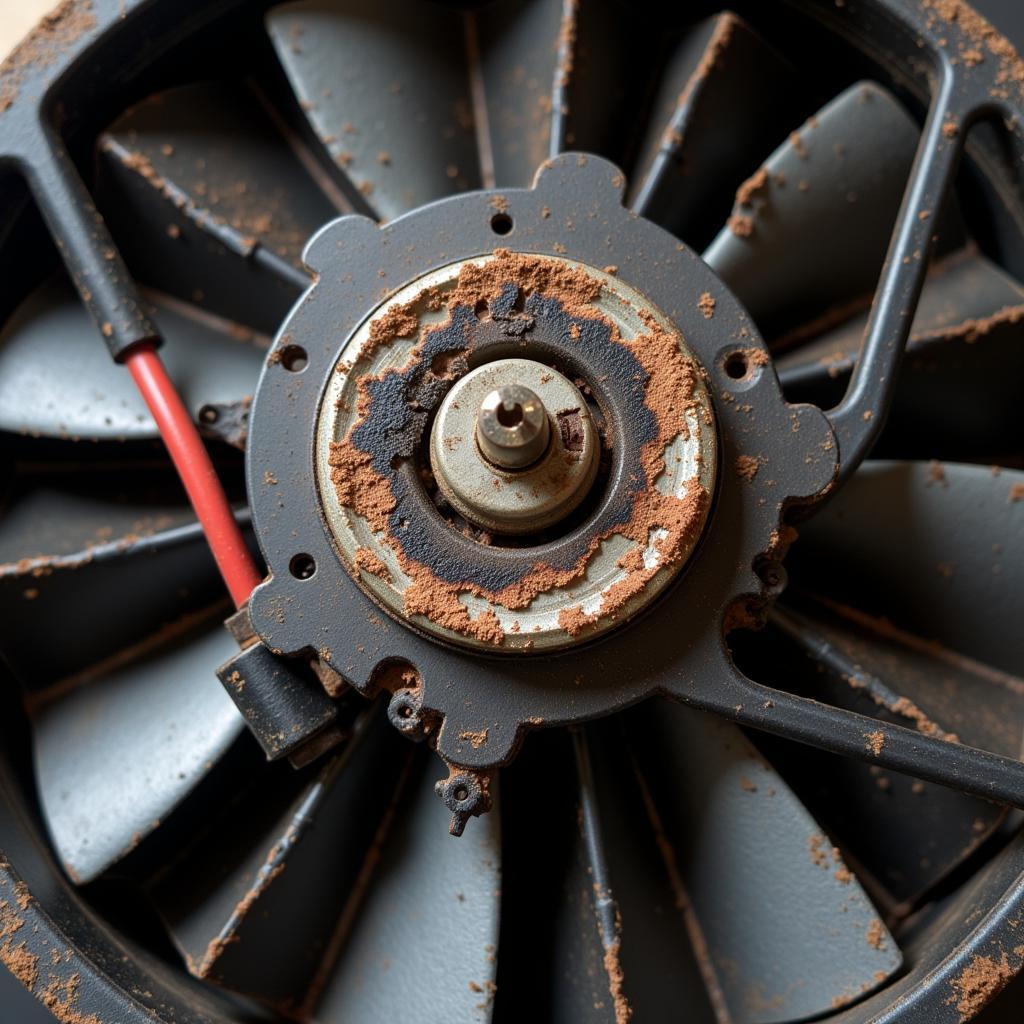A malfunctioning cooling fan can lead to overheating, which can cause serious damage to your car’s engine. Understanding the common Car Problems Cooling Fan issues and how to address them can save you time, money, and potential headaches. This comprehensive guide will delve into the intricacies of cooling fan issues, providing practical solutions for car owners, mechanics, and technicians alike. For those experiencing issues with their car’s fans not turning on, this resource provides detailed troubleshooting steps.
If you’re experiencing any problems with your Toyota hybrid car, or if your car is experiencing a multitude of issues, this article can offer some valuable insights and troubleshooting advice.
Understanding Your Car’s Cooling System and the Role of the Cooling Fan
The cooling system is vital to the health of your car’s engine. It prevents overheating by circulating coolant through the engine block and radiator. The cooling fan plays a crucial role in this process, pulling air through the radiator to cool the coolant when the car is stationary or moving slowly. When the cooling fan fails, the coolant can’t dissipate heat effectively, leading to a rise in engine temperature.
 Car Cooling System Diagram
Car Cooling System Diagram
Common Car Problems Cooling Fan Issues
Several problems can affect your car’s cooling fan, ranging from simple electrical issues to more complex mechanical failures. Here are some of the most common culprits:
- Blown Fuse or Relay: A simple blown fuse or a faulty relay can prevent the cooling fan from receiving power.
- Faulty Fan Motor: The fan motor itself can wear out over time, leading to reduced performance or complete failure.
- Damaged Wiring: Corrosion or damaged wiring can interrupt the electrical circuit that powers the cooling fan.
- Malfunctioning Temperature Sensor: The temperature sensor tells the cooling fan when to turn on. If it fails, the fan might not activate when needed.
- Low Coolant Level: Low coolant levels can also trigger overheating and put additional strain on the cooling fan.
- Radiator Issues: Problems with the radiator itself, such as clogs or leaks, can impede the cooling process and indirectly affect the fan’s operation.
 Faulty Cooling Fan Motor
Faulty Cooling Fan Motor
If you’re dealing with a car that constantly runs hot, getting a proper inspection and diagnosis is crucial.
Diagnosing Car Problems Cooling Fan: A Step-by-Step Guide
- Check the Fuse and Relay: Locate the cooling fan fuse and relay in your car’s fuse box (refer to your owner’s manual). Visually inspect the fuse for any breaks and test the relay with a multimeter.
- Inspect the Fan Motor: With the engine off, try spinning the fan blades by hand. If they feel stiff or don’t spin freely, the motor might be seized.
- Examine the Wiring: Trace the wiring from the fan motor back to the relay and temperature sensor, looking for any signs of damage or corrosion.
- Test the Temperature Sensor: Use a multimeter to test the resistance of the temperature sensor. Compare your readings with the specifications in your car’s service manual.
- Check Coolant Levels: Make sure the coolant level is within the recommended range.
“A proactive approach to car maintenance is always the best strategy. Regularly checking your coolant levels and having your cooling system inspected can prevent many common cooling fan problems,” says John Davis, a seasoned automotive technician with over 20 years of experience.
Fixing Car Problems Cooling Fan
Depending on the diagnosed issue, the fix could be as simple as replacing a fuse or as complex as replacing the entire fan assembly. In some cases, professional help may be necessary.
“Don’t underestimate the importance of a properly functioning cooling fan. Overheating can warp engine components and lead to costly repairs down the road,” advises Maria Rodriguez, a certified mechanic specializing in automotive cooling systems.
If you’re unsure about diagnosing or fixing the issue yourself, it’s always best to consult a qualified mechanic. A used car can often come with its own set of radiator problems, so be sure to check those as well.
 Replacing Car Cooling Fan
Replacing Car Cooling Fan
Conclusion
Car problems cooling fan malfunctions can lead to serious engine damage if not addressed promptly. By understanding the common causes and following the diagnostic steps outlined in this guide, you can effectively troubleshoot and fix these issues. Regular maintenance and proactive checks can help prevent cooling fan problems and ensure the longevity of your vehicle’s engine. For further assistance or if you have a lot of car problems, don’t hesitate to contact AutoTipPro at +1 (641) 206-8880 or visit our office at 500 N St Mary’s St, San Antonio, TX 78205, United States.
FAQ
- How often should I check my car’s coolant level? It’s a good idea to check your coolant level at least once a month.
- What are the signs of a failing cooling fan? Common signs include overheating, a loud noise from the engine compartment, and a constantly running fan.
- Can I drive my car with a faulty cooling fan? It’s not recommended to drive with a faulty cooling fan, as it can lead to engine damage.
- How much does it cost to replace a car cooling fan? The cost can vary depending on the make and model of your car, but typically ranges from $100 to $400.
- How can I prevent car problems cooling fan issues? Regular maintenance, including coolant flushes and system inspections, can help prevent cooling fan problems.
- What is the difference between a mechanical and an electric cooling fan? Most modern cars use electric cooling fans controlled by a temperature sensor, while older cars might have mechanical fans driven by the engine’s belt.
- What should I do if my car overheats while driving? Pull over to a safe location, turn off the engine, and allow it to cool down completely before checking the coolant level.




Leave a Reply